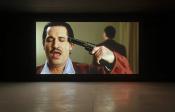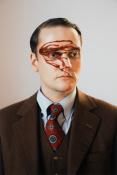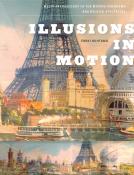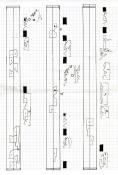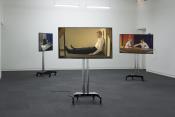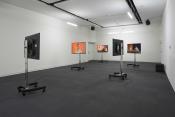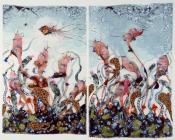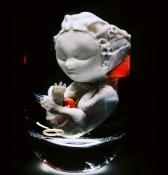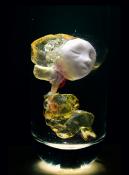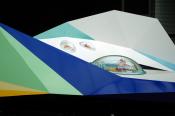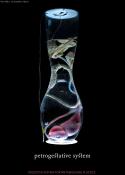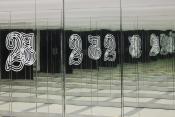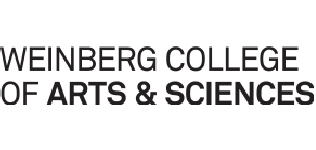Kerry tribe,
2013
“Tribe’s film, video and installation works are meditations on cognition, using image, text, and sound to explore what she calls “the phenomenology of memory.” Often working with multiple projections and timed loops, her installations are designed to structurally underscore the content of her work. Tribe’s fascination with the literal mechanics of moving images suggests that the medium is capable of mirroring cognitive processes in profoundly generative ways.” – Corinna Peipon
Tribe’s work has been the subject of solo exhibitions at The Power Plant in Toronto, Modern Art, Oxford, Camden Arts Centre in London and Arnolfini in Bristol. It has been included in recent exhibitions at the Museum of Modern Art and the Whitney Museum in New York and the Hammer Museum in Los Angeles. Tribe is a recipient of a Creative Capital grant and a USA Artists Award. She received her MFA from UCLA in 2002. Tribe lives and works in Los Angeles.
Lucía Sanromán,
2013
Lucía Sanromán is an independent curator and writer who lives between Mexico City and San Diego, CA. Her current focus lies in investigating aesthetics in relation to efficacy and public practice, and in exploring the relationships and limits between aesthetics and disciplines outside of the arts. From 2006 to 2011, Sanromán served as Associate Curator at the Museum of Contemporary Art San Diego. In 2008 she co-curated, with Ruth Estévez, the inaugural exhibition for Centro Cultural Tijuana’s expansion with the exhibition Proyecto Cívico/Civic Project. She was curator of Political Equator 3 organized by Teddy Cruz for UCSD/Ford Foundation (2011); Proyecto Coyote for Encuentro Internacional de Medellin 2011 (MDE11); and Anomalia for the University Art Gallery at UC San Diego (2012).
Sanromán is the editor, with Cesar Garcia, of Marcos Ramírez ERRE published by INBA and Museo de Arte Carrillo Gil (2012), and was a lecturer in the contemporary art symposium SITAC: estar-los-unos-con-los-otros in 2013. Sanromán has been awarded the 2012 Warhol Foundation Curatorial Fellowship for Citizen Culture: Art and Architecture Shape Policy, an exhibition and research project organized by the Santa Monica Museum of Art for September 2014. She is co-curating, with Candice Hopkins, Janet Dees and Irene Hofmann the next edition of SITE Santa Fe’s signature Biennial SITElines.2014: Unsettled Landscapes (July 2014. Her current project, the retrospective exhibition inSite: Cuatro ensayos de lo público sobre otro scenario, is on view at La Tallera, in Cuernavaca Mexico (March 28 to June 29, 2014).
Beate Geissler,
Spring 2015
Beate Geissler and Oliver Sann have been active as a collaborative partnership since 1996. Their work concentrates on inner alliances of knowledge and power, their deep links in western culture and the escalation in and transformation of human beings through technology. Their work has been exhibited nationally and internationally in museums, galleries and alternative spaces including The Renaissance Society, Chicago, The Museum of Contemporary Photography, Chicago, the NGBK (New Society for Visual Arts) Berlin, and the Fotomuseum Antwerp. Currently, Geissler is an Associate Professor of Art at the University of Illinois at Chicago and Sann is Assistant Professor at the School of the Art Institute, Chicago.
http://geisslersann.com/,Erkki Huhtamo,
Spring 2015
Professor Erkki Huhtamo is a media archaeologist, author, and exhibition curator. At DMA his areas are the history and theory of media culture and media arts. He is internationally known as a pioneer of an emerging approach to media studies called media archaeology. It excavates forgotten, neglected and suppressed media-cultural phenomena, helping us to penetrate beyond canonized "grand narratives" of media culture. Professor Huhtamo pays particular attention to the "life" of topoi, or clichés and commonplaces that emerge over and over again within media history and provide "molds" for new experiences. What may seem new things often prove to be just newly packaged ideas repeated during hundreds and even thousands of years.
Professor Huhtamo has applied this approach to phenomena like "peep media" (a notion he has coined), the screen, panoramas and dioramas, video games, and mobile media. He has also written about the work of many media artists, including Paul deMarinis, Rafael Lozano-Hemmer, Golan Levin, and Bernie Lubell. Professor Huhtamo's most recent books are Media Archaeology. Approaches, Applications, and Implications (ed. with Dr. Jussi Parikka, University of California Press, 2011) and the large monograph Illusions in Motion. Media Archaeology of the Moving Panorama and Related Spectacles (The MIT Press, 2013). He is currently working on a number of new books: a media archaeology of interactive media (The MIT Press, under contract), a history of mechanical theaters and a theoretical volume tentative titled “Media Archaeology as Topos Study.”
Video of presentation at Strangers: A Symposium ,Devin Kenny,
Spring 2015
Devin Kenny is an interdisciplinary artist, writer, musician, and independent curator. Hailing from the south side of Chicago, he relocated to New York to begin his studies at Cooper Union. He has since continued his practice through the Bruce High Quality Foundation University, Skowhegan artist residency, SOMA Mexico City, and collaborations with DADDY, Studio Workout, Comotroovay-sa, Adult Contemporary and various art and music venues in New York City, Chicago, Los Angeles, and elsewhere.
Video of presentation at Strangers: A Symposium, devinkenny.info,Rob Horning,
Spring 2015
Rob Horning is the Executive Editor of The New Inquiry and author of Marginal Utility. The New Inquiry is a space for discussion that aspires to enrich cultural and public life by putting all available resources—both digital and material—toward the promotion and exploration of ideas.
http://thenewinquiry.com/author/rob/,Geof Oppenheimer,
2008
Geof Oppenheimer’s practice takes up questions of civic value, the ways in which political and social structures are encoded in images and objects and how meaning is formed in the modern world. Starting from the from the proposition that formal value is a social value, his projects interrogate the forms and rules of civic discourse as a material, positing art as a space of liberated social dialogue. Trained as a sculptor, Oppenheimer works across multiple mediums including stage set video productions, and photography.
His work has been exhibited nationally and internationally at a variety of venues such as the Mary and Leigh Block Museum of Art, PS1/MOMA, The Contemporary Museum, Baltimore; The Museum of Contemporary Art, Chicago, SITE Santa Fe, The Indianapolis Museum of Art, The Aspen Art Museum, The 4th Athens Biennale and CAB Art Center, Brussels. His work has been the subject of published writings in Art in America, The Wall Street Journal, The Chicago Tribune and The New Yorker. He studied at the Maryland Institute, College of Art where he received his BFA and received an MFA from the University of California, Berkeley. He also studied at the Academia voor Beeldende Vorming in the Netherlands. Geof Oppenheimer is an Associate Professor of Practice in the Department of Visual Arts at the University of Chicago and lives and works in Chicago, Illinois.
Wangechi Mutu,
Fall 2014
Kenyan-born Wangechi Mutu is a Brooklyn-based artist whose sculptures, works on paper, installations, and videos explore gender, race, and sexual identity using collage and assemblage strategies that create provocative juxtapositions of the female body. Her collages are constructed using fragments from fashion and travel magazines, pornography, African art books, automotive schematics, and images drawn from science fiction as well as hand-drawn or painted elements which create a variety of new formations of the body. Photo-based collage elements are often intermixed with decorative or abstract patterns which create a simultaneous feeling of familiarity and other-worldliness to the works.
Pinar Yoldas,
Fall 2014
Pinar Yoldas is a cross-disciplinary artist/researcher who lives and works between Durham, NC and Berlin. Pinar’s research explores the collaborative potential between art and biological sciences. Her solo shows include AlterEvolution, Ekavart, Istanbul (2013) and An Ecosystem of Excess, Ernst Schering Project Space, Berlin (2014). Her group shows include ThingWorld, NAMOC National Art Museum of Beijing (2014); Transmediale Festival, Berlin (2014); and Tiere und Menschen, Museum Ostwall, Dortmund (2014).
She is based at Duke University, where she pursues her PhD at the Center for Cognitive Neuroscience and Media Arts and Sciences. After her undergraduate studies at Middle East Technical University and further studies at Bilgi University, she received her MS at Istanbul Technical University, BArch (METU) and her MFA at University of California, Los Angeles. Her book An Ecosystem of Excess was published by ArgoBooks in 2014.
pinaryoldas.info,Marcos Lutyens,
Fall 2014
Marcos Lutyens has exhibited internationally, including at Documenta 13, Los Angeles County Museum of Art, the Centre Georges Pompidou, the Royal Academy, the National Art Museum of China and many other museums and institutions. He has worked with various tools and approaches to explore the processes of the mind. His work with the mind has lead him to develop events and exhibits that reflect research with specific social groups such as the Muxhe, from the Zapotec culture in Southern Mexico. Building on his investigations into consciousness and social dynamics, Lutyens has worked on large-scale projects that involve the broader surroundings. Works include data tracking or feedback from pedestrian interactions, pollution and air quality levels, brain wave monitoring, animal communication and other dynamics that are generally invisible to the casual observer, and yet as important to us as the subjective processes of the inner mind.
marcoslutyens.net,
